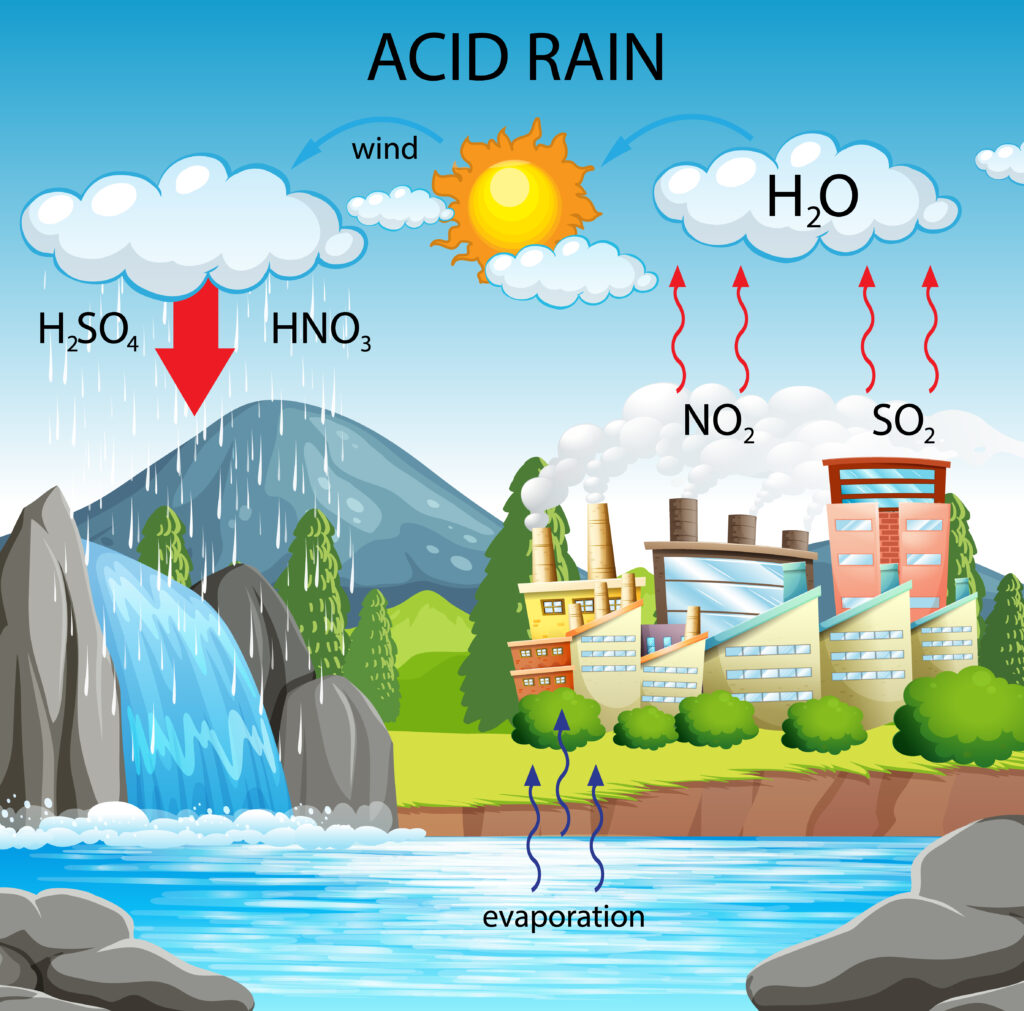Air pollution, a persistent and escalating environmental challenge, results from the introduction of deleterious substances into the Earth’s atmosphere. This complex issue is rooted in a myriad of sources, each contributing to a cocktail of pollutants that exert profound and far-reaching impacts on both human health and the environment.
As societies continue to industrialize and urbanize, the consequences of unchecked air pollution become increasingly apparent. From the fumes emanating from vehicles to the smokestacks of industrial complexes, the composition of the air we breathe is undergoing a transformation that poses significant risks to public health and the delicate balance of our ecosystems.
Understanding the causes, effects, and potential solutions to air pollution is not merely an academic exercise but a crucial step toward safeguarding the well-being of our planet and its inhabitants. This exploration delves into the intricate web of factors contributing to air pollution, examines the tangible repercussions on human health and the environment, and advocates for actionable solutions that can pave the way toward a cleaner, sustainable future. Join us on this journey to unravel the layers of “Air Pollution: Causes, Effects, and Solutions.
Causes of Air Pollution:
- Particulate Matter (PM): Particulate matter consists of tiny particles suspended in the air. PM2.5 (particles with a diameter of 2.5 micrometers or smaller) and PM10 (particles with a diameter of 10 micrometers or smaller) can penetrate the respiratory system, causing respiratory and cardiovascular issues. The World Health Organization (WHO) has established guidelines, with an annual mean PM2.5 level of 10 µg/m³ considered safe.
- Ground-level Ozone (O3): Ozone at ground level, a major component of smog, can cause respiratory problems, worsen asthma, and reduce lung function. The WHO guideline for ozone is a maximum daily 8-hour mean of 100 µg/m³.
- Nitrogen Dioxide (NO2): This gas is produced by combustion processes, such as those in vehicles and power plants. Long-term exposure can lead to respiratory issues, and the WHO guideline for annual mean NO2 is 40 µg/m³.
- Sulfur Dioxide (SO2): SO2 is released during the burning of fossil fuels containing sulfur. It can irritate the respiratory system and contribute to the formation of acid rain. The WHO guideline for 24-hour mean SO2 is 20 µg/m³.
- Carbon Monoxide (CO): A colorless, odorless gas produced by incomplete combustion of carbon-containing fuels. High levels can be life-threatening, causing symptoms like dizziness, nausea, and even death. The WHO guideline for maximum daily 8-hour mean CO is 10 mg/m³ (8.7 ppm).
- Volatile Organic Compounds (VOCs): VOCs, found in household products, paints, and vehicle emissions, contribute to indoor and outdoor air pollution. Specific guidelines vary for different VOCs.
- Lead: Though less common in modern air pollution, lead exposure can cause neurological and developmental issues. There is no safe level for lead exposure, and efforts are made to minimize its presence.
- Mercury: Released into the air from industrial processes, mercury can accumulate in water bodies and impact fish. Consuming mercury-contaminated fish can pose health risks. Guidelines vary, but efforts aim to reduce exposure.
- Agricultural Practices: Pesticides, herbicides, and fertilizers release ammonia and other chemicals into the air.
- Waste Management: Improper disposal and burning of waste contribute to air pollution, releasing harmful substances.
Air Pollution Effects on Human Health:
- Respiratory Issues: Prolonged exposure to pollutants like PM2.5 and ozone has been directly linked to an increase in respiratory problems, aggravating conditions such as asthma and bronchitis.
- Cardiovascular Diseases: The long-term inhalation of air pollutants is associated with an elevated risk of heart diseases and strokes, posing a severe threat to public health.
- Cancer Risk: Certain air pollutants, including benzene and formaldehyde, have carcinogenic properties, contributing to the development of cancer among exposed populations.
- Neurological Effects: Emerging research suggests that air pollution may have adverse effects on cognitive functions and is associated with an increased risk of neurodegenerative diseases.
- Pregnancy Complications: Pregnant women exposed to air pollution face an increased risk of complications, potentially affecting fetal development and overall maternal health.
Environmental Impact Air Pollution:

- Climate Change: Greenhouse gas emissions from various sources contribute to climate change, causing alterations in weather patterns and a rise in global temperatures.
- Biodiversity Loss: Air pollution disrupts ecosystems, leading to a decline in biodiversity and disturbing the delicate balance within ecosystems.
- Acid Rain: The release of sulfur dioxide (SO2) and nitrogen oxides (NOx) contributes to the formation of acid rain, causing harm to soil, water bodies, and vegetation.
Air Pollution Solutions and Mitigation:

- Renewable Energy: A decisive shift towards clean and renewable energy sources, such as solar and wind power, is imperative to mitigate the reliance on fossil fuels and curb emissions.
- Emission Controls: Enforcing stringent regulations on industrial emissions and vehicular exhaust is essential to limit the release of harmful pollutants into the atmosphere.
- Sustainable Practices: Encouraging and implementing sustainable agricultural methods, waste management, and urban planning can significantly contribute to reducing air pollution.
- Reforestation: Planting trees on a large scale serves as a natural and effective method to absorb pollutants and improve overall air quality.
- Public Awareness: Raising awareness about the health risks associated with air pollution is crucial in fostering a collective responsibility for adopting eco-friendly behaviors.
- Improved Transportation: Investing in and promoting public transportation, walking, and cycling can substantially reduce vehicular emissions.
- Technological Innovations: Embracing and implementing cleaner technologies in industries and transportation is instrumental in reducing overall pollution levels.
- International Collaboration: Facilitating global collaboration is essential to address transboundary air pollution issues and develop coordinated strategies for environmental preservation.
Addressing the multifaceted challenge of air pollution demands concerted efforts on local, national, and international levels. Through the adoption of sustainable practices, the implementation of rigorous regulations, and the deployment of innovative solutions, we can strive towards a cleaner, healthier atmosphere for the well-being of current and future generations.

Leave a Reply